Parker Day
"Le Freak C’est Chic"
LOS ANGELES may be best known for its sunlight but it’s the city’s darkness that draws photographer Parker Day to its flame.
From her home studio in L.A.’s Mid-City, Day explores the malleability of identity by challenging the notions of beauty and gender with an experimental, low-fi aesthetic on 35mm film. Her latest series, ICONS - recently exhibited in L.A., New York and Portland - consists of 100 semi-fictional portraits, saturated by trippy color and allegory, which reveal a catalogue of fantastical characters in equally fantastical costume.
Capturing imperfections and unconventional detail through a hyperreal lens, Day toys between reality and all-out-bonkers with characters that have evolved into playful personalities, made popular on the artist’s Instagram. Not only does ICONS uncover the intimate and inventive collaboration between photographer and subject, it ultimately serves as a fascinating documentation of L.A.’s underground creative community at present.
Jonathan Velardi delves into one of the wackiest closets in town to talk fashion, film and freaks with Parker Day.
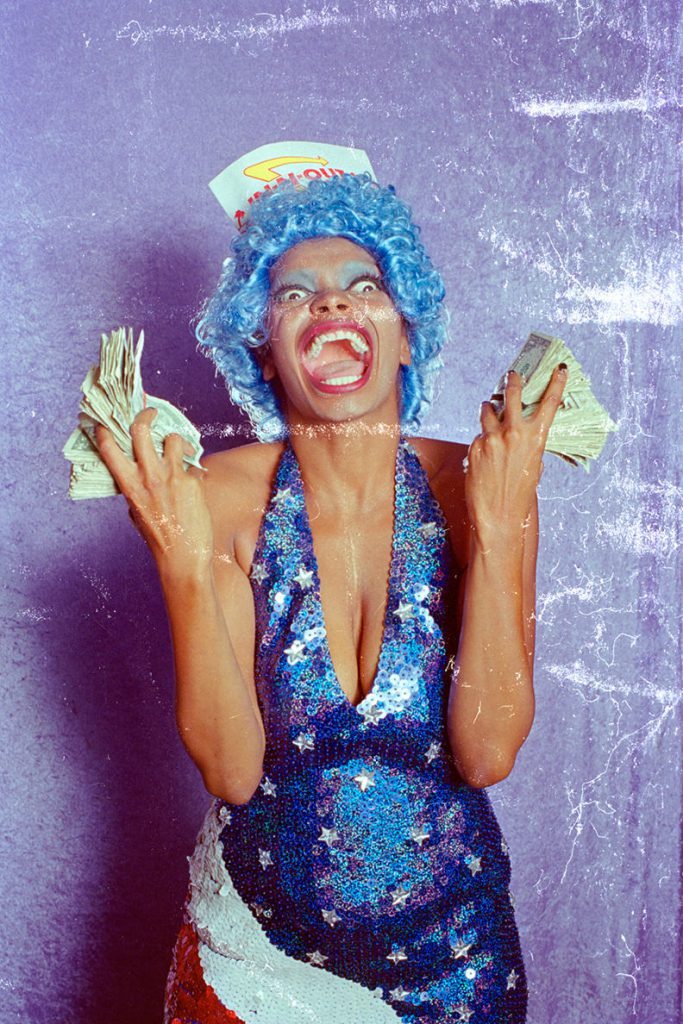
Jonathan Velardi: How did ICONS come about?
Parker Day: I was looking to build a series that I could really sink my teeth into. My life had meandered in and out of education and it was never the right time to dedicate myself to a project of that scale. I had very quickly latched upon the concept of a portrait series in the studio that would confront the many faces of identity. I’ve always shot eccentric characters, often in cheeky and dark environments. The aesthetic and context with what I wanted to do with ICONS quickly clicked. I set the goal of shooting 100 images because I thought it would give me enough time to build and solidify my style to an audience. I shot 2 portraits a week for a year and half and then subsequently edited that down to the final 100.
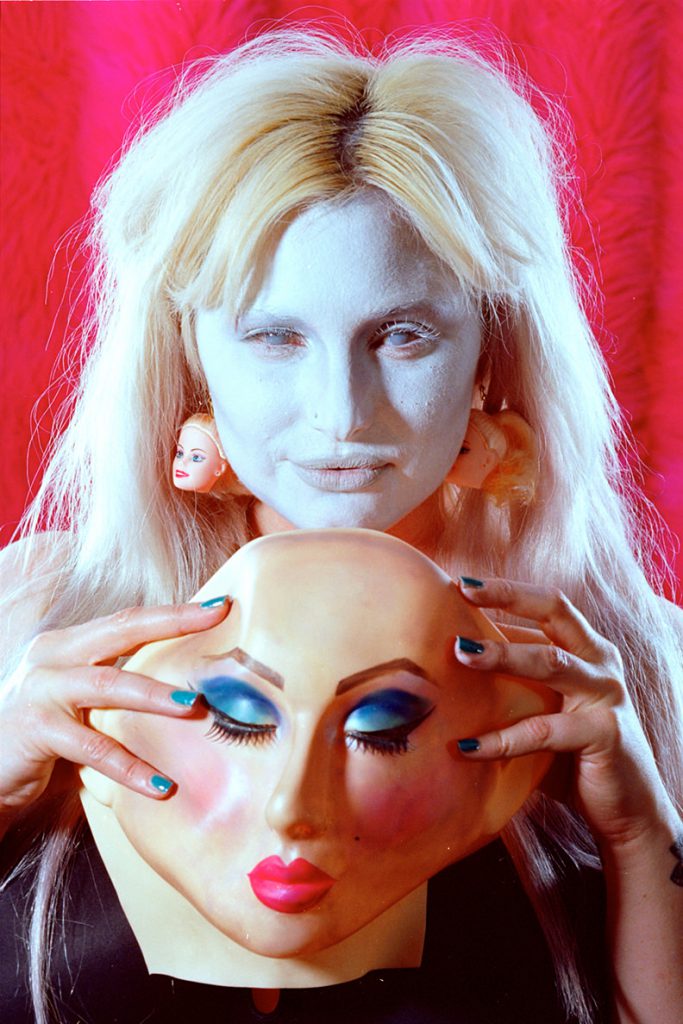
JV: Is ICONS a visual autobiography?
PD: The portraits are of the subject, they’re self-portraits and portraits of the viewers looking at them. The idea is that we all have many faces and if you connect to any one of the 100 portraits it’s because there’s something there to resonate with. Each frame consists of all of the things I loved consistently throughout my life; music, fashion, pop culture and thrift. It’s funny because I used to think that if I was going to be a successful photographer I needed to shoot the latest Gucci or Prada, but once I let go of what was holding me back, I became free to just play with what I love.
JV: It’s interesting you thought what you shot constituted to being a successful artist.
PD: I soon realised it was about self as opposed to looking outside of myself, and who and what I ought to be. It’s not about fitting in. I’m inspired by David Lynch, Diane Arbus – artists who explore dark concepts with a sense of humor and absurdity. I admire early black and white street photography by Weegee through to David LaChapelle, who changed the game for art photography in the nineties. Success doesn’t have to be mainstream; it can be dark and scary.
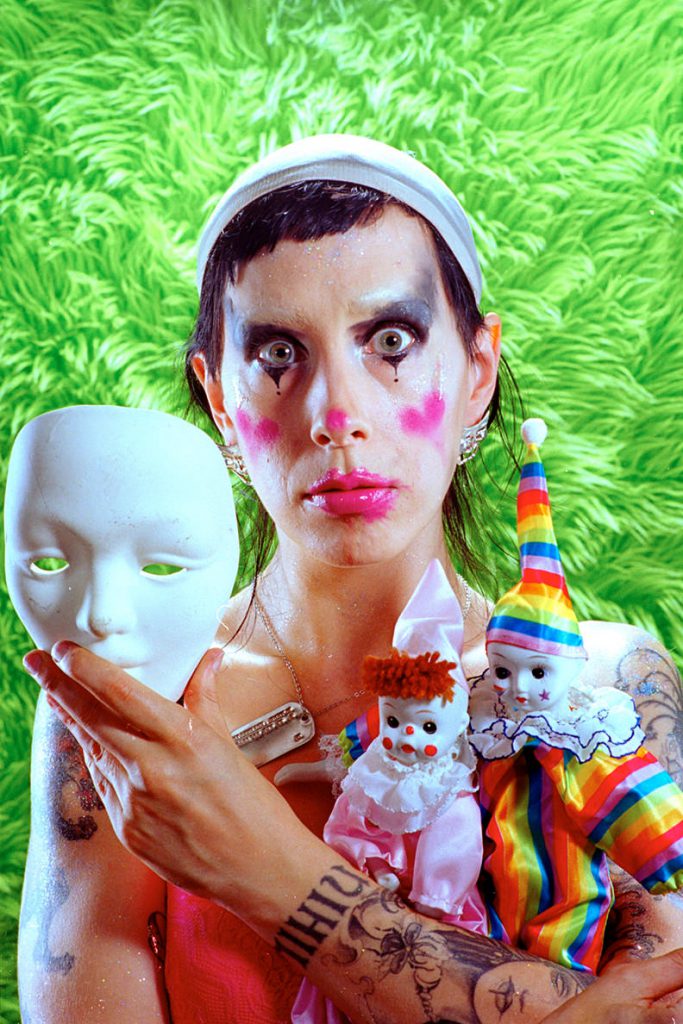
JV: Does L.A. have an inherent darkness?
PD: Definitely. L.A. is notorious for its alluring glitz and dark underbelly. You don’t have to dig that deep to find more acceptance towards people who are more extravagant in the way they present themselves here.
JV: How do you find your subjects?
PD: I have a lot of people in mind but I’m always open to seeing who’s out there, so I’ll get online. I recently posted a call out on Instagram >https://www.instagram.com/heyparkerday/< about how I’m looking for fresh freaks in L.A. for a new series. The response has been overwhelming. I’ll look through them all by scanning their social media and I’ll get a sense of who they are and if they represent something that reminds me of my own past. I’m definitely drawn to people with a wildness or reckless abandon.
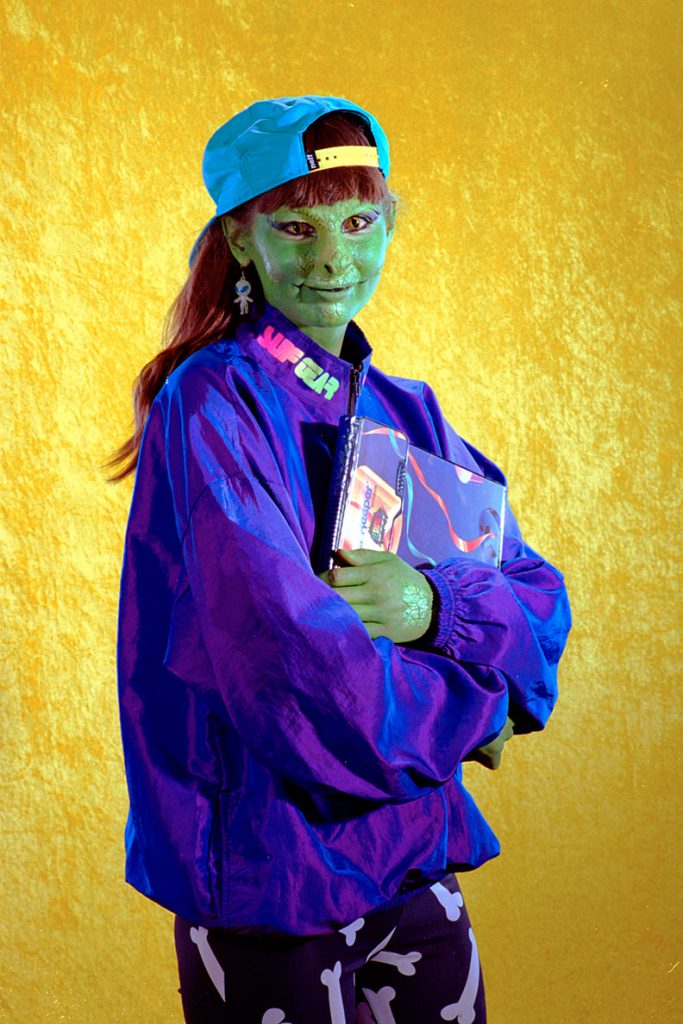
JV: Are many of your subjects artists themselves?
PD: Many of them are artists, designers and musicians. Artists are naturally tapped into the malleability of existence and perception, and so they're open to collaboration and experimentation. I like people with a strong presence. Maddy Ellwanger, who’s the subject in ‘Goosebumps’, is a great example of that. She has so much energy and life that oozes out of her. She’s an entertainer, musician and artist – all those qualities make her naturally suited to what I’m looking for. It’s like playing dress up when I was a little kid - I just want to work with freaks like me who want to play.
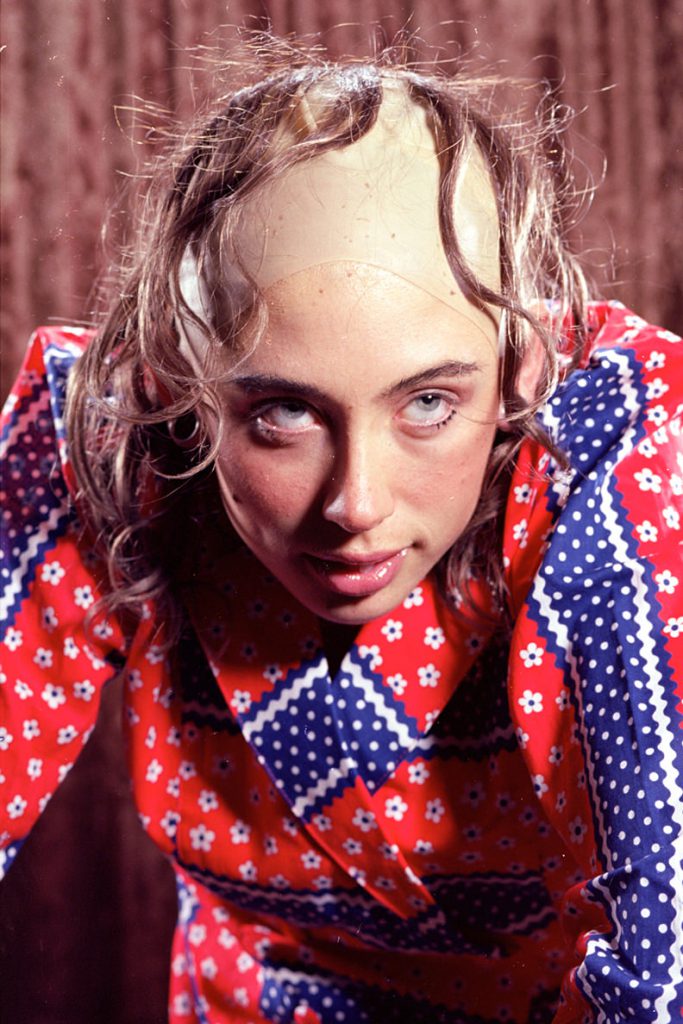
JV: You use “freak” a lot. What does freak mean to you?
PD: A freak is someone not in the main stream. They exist on the fringes; they create their own existence and lifestyle that isn’t determined by society’s standards. L.A. is full of freaks. It's somewhere that finally feels like home.
JV: Fashion obviously plays a big part in your work. How do you go about collecting pieces and looks, and does the fashion inspire a character or are the characters already constructed before you hit the racks?
PD: I love to thrift. I thrift at least once a week. It’s really whatever speaks to me when I’m flipping through the racks. I saw this canary jacket the other day. I loved the color before noticing it was original Versace from the 80s – total score. So I’ll see something that catches my eye and I’ll ask myself, “who is she? Who’s the character wearing this?” If I can’t think of a personality I’ll pass it up. Other times I’ll get the whole vision. One piece may be magnetised in my mind and I’ll roll with it. Like this fresh Surf Gear windbreaker. I used it for ‘Cold Blooded’, a reptilian girl, who’s just trying to be cool like the rest of us on our first day at school; or the leather two-piece worn by ‘Virginia Slim Jim’ - accessorised with a Slim Jim - because she may have a slick bob but she’s 100% trashy hoe. I use visual repetition in an image to create a rhythm within the composition so these details are very important – they allow me to flesh out that character.
JV: Aside from crop-tops, tell me about the image crop for ICONS?
PD: ICONS was the first time that I shot exclusively in portrait on 35mm film. My Dad owned a comic bookstore in San Jose and I would collect old superhero trading cards as a child. I was influenced by their traditional composition, like old portraits in film magazines from the 30s and 40s. I wanted a tight crop to allude to classical portraiture. I continue to draw a lot of inspiration from San Jose, including how the series was printed. I wanted to recreate the same glossy and metallic quality like the trading cards, so I chose rich C-prints on metallic paper to give an ultra vivid lustre to the surface.
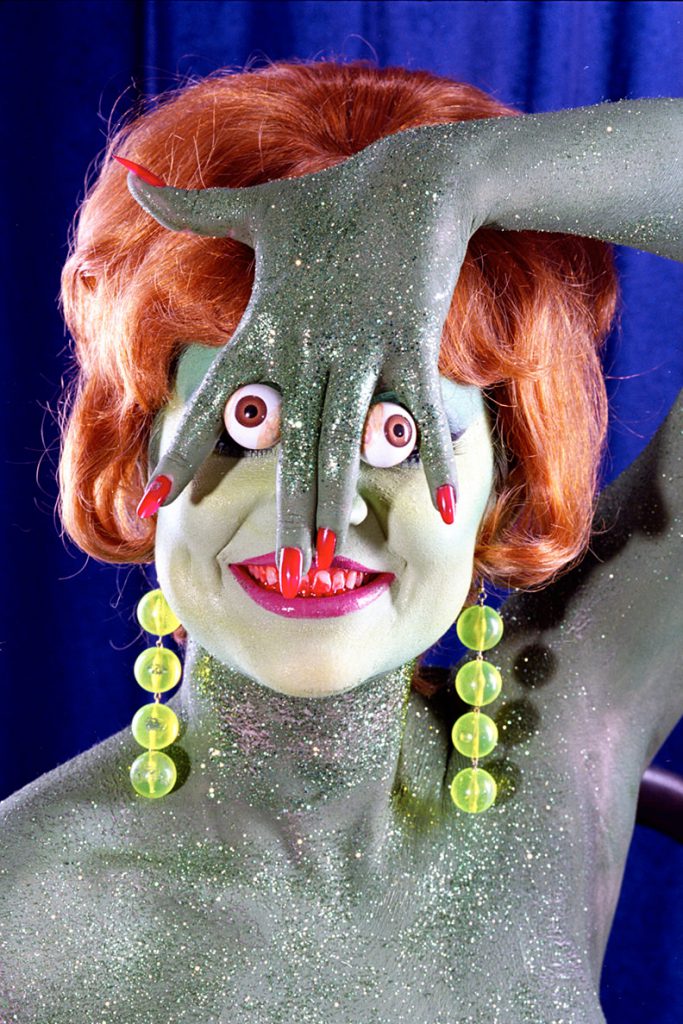
JV: Can you tell me more about the next series you’ll be shooting?
PD: It’s very nascent right now but the concept will draw from a larger cultural unconscious. I’ve been writing a lot, however I’m trying not to limit myself before shooting. If it’s too planned out it becomes sterile. The darkness needs to seep into the cracks. ICONS was a collaborative process but the character design for this new series will be more deliberate. I have some ideas for characters, like a completely hairy heorine inspired by an R. Crumb’s drawing. I have a make-up artist who can do all the hairs. It’s going to be wild when I find the right model. I’ll be shooting with my new tank – a 6x7 medium format Mamiya RZ67. I didn’t shoot much full body for ICONS because with 35mm you don’t get that much detail. With this new camera I’ll capture more information with each negative. I’ve always loved the uncensored photo – that’s why I don’t Photoshop. I like zits! I deliberately accentuate details like that. I light from behind so it’s more exaggerated or I’ll tease the subject’s hair to make it more imperfect. It’s about highlighting what we’re not used to seeing because everything is so retouched nowadays.
JV: Here are two words you may not like: Cindy. Sherman.
PD: Cindy! Truthfully, I used to be so irritated with the comparisons. I’d get so paranoid and ask myself, “am I too much like Cindy Sherman?” She really paved the way for this style of photography but I believe there’s plenty of room if an artist is doing something in a similar vein as another artist. Art history is a long and progressive story. My contemporaries naturally inspire me and in turn I hope to inspire the next generation. For ICONS I shot a novelty self-portrait as a nod to Sherman. I costumed myself as an unglamorous clown, cradling a couple of clown dolls. I thought if I’m going to do a Cindy-Sherman-thing, I should show my respects. I’m holding a blank mask that reveals my painted face, which really symbolised the state of intent for the whole series.
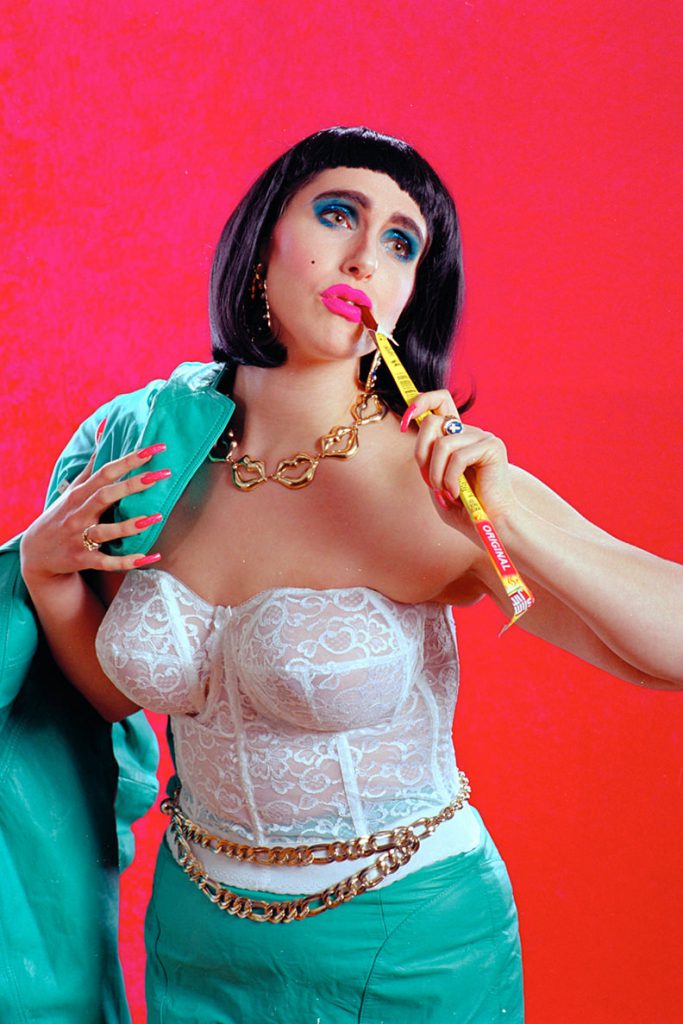
JV: How do you engage with feminist discourse that can be perceived in your practice?
PD: I don’t observe anything that solidifies a binary anymore. I’m not deliberately creating a feminine versus masculine narrative. My practice is about the malleability of identity in general and how we’re all masculine and feminine, regardless of our gender identification. It’s not one-sided. Of course I’m a feminist; I’m not an asshole. Let’s just enjoy the play of the spectrum!
‘ICONS by Parker Day’ is now available as a monograph published by not a cult